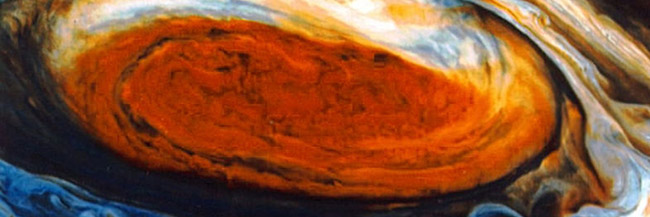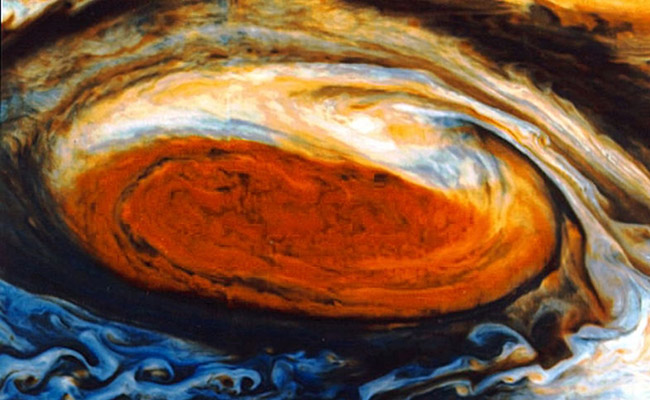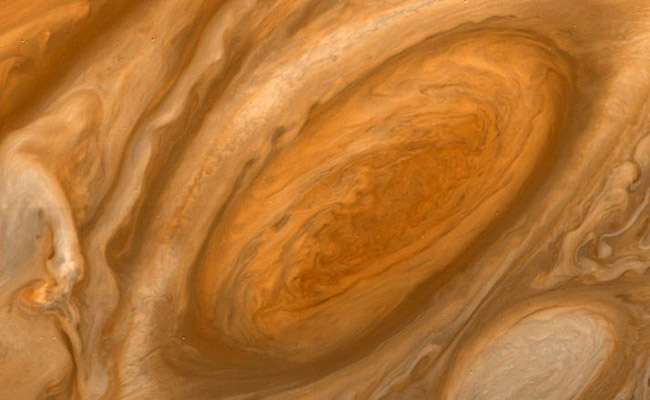Is Jupiter’s Giant Red Spot Getting Smaller?

They say “change is good” but when it comes to Jupiter’s Giant Red Spot we can only wait and see where this swirling massive storm will settle out.
Observations taken with the Hubble Telescope has confirmed that The Giant Red Spot (that has raged on for approximately 300 years) is indeed in the process of shrinking and changing color (from red to orange). In addition to this “shrinkage” it is also becoming more sphere-shaped.

By NASA / JHUAPL / SwRI [Public domain], via Wikimedia Commons
The Rate of Shrinkage
Jupiter’s Giant Red Spot was first being observed as far back as the late 1800’s. At this time it was gauged to be about 41,000 kilometers wide or big enough to fit three Earth-sized planets inside.
NASA’s twin Voyager missions did another flyby of this gas giant in 1979 and were surprised to see it measuring in at 23,300 kilometers-wide. Another measurement taken in 1995 showed the Red Spot at only 21,000 kilometers and in 2009 it was just 18,000 kilometers-wide.
By 2012 it was stated that the Giant Red Spot was decreasing by about 933 kilometers-per-year and is now visibly more sphere-like in shape rather than oblong. However, it appears recently Jupiter’s storm has slowed down and is sitting at 16,500 kilometers across and is definitely an orange color.
Amy Simon, associate director for strategic science at NASA’s Goddard Space Flight Center, gives us a peek into the mystery. In a statement she says;
“In our new observations, it is apparent that very small eddies are feeding into the storm. We hypothesized that these may be responsible for the accelerated change, by altering the internal dynamics and energy of the Great Red Spot.”

By Voyager 2 (http://photojournal.jpl.nasa.gov/catalog/PIA00065) [Public domain], via Wikimedia Commons
20 Fun Fast Facts About Jupiter
Jupiter’s Giant Red Spot is not the only fascinating aspect of this planet. Here are 20 fun fast facts to blow your mind.
- Jupiter is the largest planet in our Solar system.
- More than 1,300 Earths could fit inside Jupiter.
- Jupiter is surrounded by thick clouds of poisonous gas.
- Jupiter spins so fast that it whips up its atmosphere to create those bands we see around the planet.
- Approximately 1,000 kilometers into Jupiter’s atmosphere the pressure is so tremendous it becomes like liquid.
- At Jupiter’s core is rocky and only slightly bigger than Earth; however it weighs 20 times more.
- Surrounding this core is an ocean of liquid hydrogen. It runs approximately 1,000 kilometres deep.
- Jupiter has many storms raging on its surface, but the Big Red Spot is the most famous.
- The storm clouds on Jupiter are about 50 kilometers thick.
- This planet has 63 moons.
- The radius of Jupiter is 69,911 kilometers.
- Jupiter is the fifth planet from the Sun at 778,500,000 kilometers.
- This planet is named after the Roman god.
- The first recorded sighting of Jupiter was around the 7th or 8th B.C. by the ancient Babylonians.
- One day on Jupiter lasts on 9 hours and 55 minutes; the shortest of them all.
- The largest of Jupiter’s moons, Ganymede is the largest moon in the solar system.
- There are no seasons on Jupiter.
- If Jupiter were 80 times more massive nuclear fusion would have occurred at its core making it a star instead of a planet.
- Jupiter emits more energy than it receives from the Sun.
- Spacecraft Juno is due to visit Jupiter around July 2016.
Jupiter’s Giant Red Spot has been a source of intrigue since it was first discovered. What other mysteries does it hold? Only time will tell…
